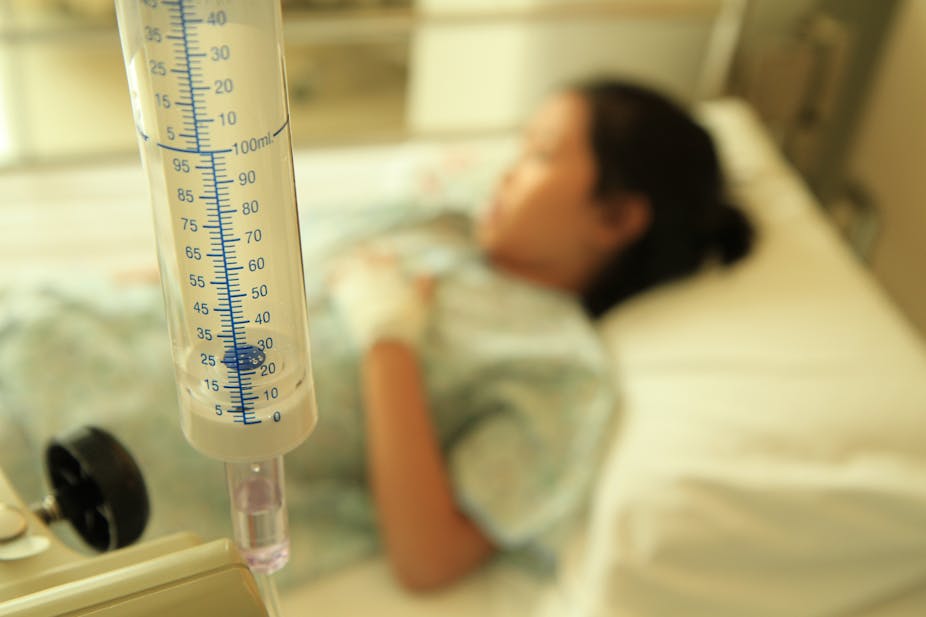Four years ago, just before Christmas, my hospital ran out of cytarabine, an essential drug used to treat and cure certain kinds of acute leukemia. This drug was suddenly in short supply across the nation. At Duke, we had enough for about 10 days based upon our historical usage, but after that we could no longer treat those already on therapy or begin treatment for newly diagnosed patients. And we couldn’t ask other hospitals in the region to “lend” us some since they were in the same boat.
To figure out how to manage the cytarabine shortage, we called emergency meeting of pharmacists, oncologists, hospital administration and clinical ethics (that’s me). First, we immediately put all of our stock in one central location to control the supply and distribution.
Second, we decided not to access the so-called “gray market” for drugs, because the provenance of medications cannot be assured. The gray market is composed of private brokers or dealers of drugs who generally surface only during a shortage.
Third, we asked our oncologists if they could switch things around a bit for their patients, and perhaps give a treatment course that didn’t involve cytarabine first to conserve the supply.
Fourth, we decided that – all things being equal – we would prioritize giving the drug to children with acute myeloid leukemia rather than adults. This is because the cure rates are much higher in kids and they need less of the drug.
And finally, we started to make our own cytarabine. Duke Hospital has a compounding pharmacy that was able to produce cytarabine from raw materials. Fortunately, this last move saved us from disaster. The FDA gave us special permission to import cytarabine precursor from England and we prepared sufficient quantities so that we never ran out. However, there was no guarantee we would be so lucky again.
Keep in mind, simply making a drug to solve a shortage is not an option that every hospital has. It’s not practical for a hospital to, in effect, become a drug manufacturer to avoid shortages. With the number of shortages, the astonishingly different types and kinds of medications affected and the varying quantities needed, it would simply overwhelm the staff and facilities of what is designed to be a small, specialized – almost boutique – kind of production facility.
Dealing with shortages
Unfortunately, in recent years unexpected drug shortages have become very common in the United States, Canada and Western Europe. And the problem shows no evidence of improving any time soon. Shortages primarily affect generic sterile injectables, but a surprisingly broad range of medicines are also affected.
When a drug is scarce, sometimes a similar medicine can be substituted but that isn’t always possible. In fact, that was the case with cytarabine. It is a generic, sterile injectible with a relatively small market and, at the time, available from only one source in the US. And it was never clear (as is often the case) why it suddenly became scarce. When a drug has no substitution, doctors have to figure out how allocate a scarce drug. Who gets priority? How do you distribute a critical medication equally and fairly?
I used our experience this experience to think about how hospitals should approach rationing drugs when they are scarce, and to develop a policy to handle shortages in the future.

Managing fairness
With the assistance of my colleagues at Duke, I wrote a policy that we have been using for two years and that has served as a model for many other institutions around the country. We adopted an approach originally developed by Norman Daniels and James Sabin that they called “accountability for reasonableness”.
They created a framework to maximize the chances that the rules governing how limited good are distributed are fair. They described four conditions that should regulate the development of a rationing plan: transparency, relevance, appeals and enforcement.
These principles mean that the proceedings, deliberations and rules should be open to all: hospital staff, patients and the public. The rules must relevant and directly related to the good being rationed. There must be a mechanism for appealing any decisions that are made, and there must be a process for ensuring that the rules actually are implemented and enforced.
To these four we added a fifth: fairness. Clinically similar patients should be treated similarly. A patient should be no more or less important than any other. The sort of fairness we emphasized was one that spurned any attempt to distinguish patients on the basis of what are known as morally irrelevant facts about them, like their ability to pay or their insurance or who they know, all of which also had no relevance to their clinical situation.
We also we created a Scarce Drug Allocation task force with representatives from the hospital pharmacy, risk management, and clinical ethics, as well as doctors and nurses who had to deal with drug shortages.
We decided to allocate scarce drugs based on both clinical need and clinical evidence. We also decided to stop using drugs for investigational purposes, unless the drug in question was being administered in a clinical trial in a non-experimental manner. In general clinical practice the experimental use of drugs is quite rare, but the off-label use of medications with minimal-to-no evidence base is distressingly common.

Dealing with constant shortages
Before we developed the framework, our hospital had experienced more than 30 shortages affecting everything from intravenous immunoglobulin (often used to fight infections and automimmune disorders) to anesthetics. So there was remarkably strong acceptance of the new policies from the staff.
In the more than two years we have used this policy, we have had to manage another 30 severe drug shortages. Some were resolved by simply substituting a similar drug. Others were controlled by limiting use based on clinical evidence, thus automatically increasing the effective supply. Nevertheless, we did come very close to exposing some patients to delayed treatment.
Our framework for managing drug shortages has worked, but there are still unresolved issues. We have never been faced with a tragic choice, where we have to decide between two equally needy patients and only one can receive a drug. We have tentatively decided that we would use the equivalent of a coin toss to make the final determination as the most reasonable and fair. But, there other questions.
Even though Duke Hospital is a regional, national (and, indeed international) referral center, most of our patients still reside within a local geographic area. Do we have a greater allegiance to our close community than to those from elsewhere even if the latter have an equal medical need? What about those people who, because of their socioeconomic and educational advantages, can utilize these privileges to come to Duke to get in line for a drug they can’t obtain locally? Clearly these (and other) thorny challenges demand answers in the real world, and we continue to discuss them.

